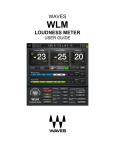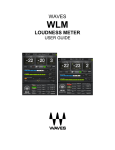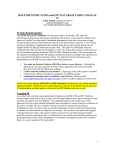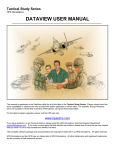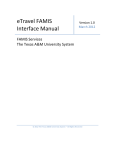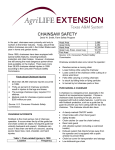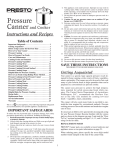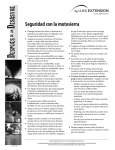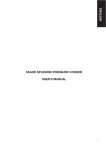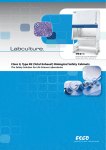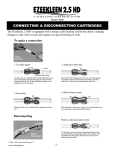Download 7-2-13 Pressure Canners - Rains
Transcript
Preserving Food: Using Pressure Canners In the second part of our canning series I would like to share an article from the University of Georgia Cooperative Extension, College of Family and Consumer Sciences in cooperation with the College of Agricultural and Environmental Sciences on using pressure canners to preserve food. Pressure canners for use in the home were extensively redesigned beginning in the 1970's. Models made before the 1970's were heavy-walled kettles with clamp-on or turn-on lids. They were fitted with a dial gauge, a vent pipe in the form of a petcock or covered with a counterweight, and a safety fuse. Most modern pressure canners are lightweight, thin-walled kettles; most have turn-on lids fitted with gaskets. At least one style is still made with heavy cast aluminum, has screw-down knobs around the canner and does not have a gasket, however. Modern pressure canners have removable racks, an automatic vent/cover lock, a vent pipe (steam vent), and a safety fuse. Use only canners that have the Underwriter’s Laboratory (UL) approval to ensure their safety. Today’s pressure canner may have a dial gauge for indicating the pressure or a weighted gauge, for indicating and regulating the pressure. Weighted gauges are usually designed to "jiggle" several times a minute or to keep rocking gently when they are maintaining the correct pressure. Read your manufacturer’s directions to know how a particular weighted gauge should rock or jiggle to indicate that the proper pressure is reached and then maintained during processing. Dial gauge canners will usually have a counterweight or pressure regulator for sealing off the open vent pipe to pressurize the canner. This weight should not be confused with a weighted gauge and will not jiggle or rock as described for a weighted gauge canner. Pressure readings on a dial gauge canner are only registered on the dial and only the dial should be used as an indication of the pressure in the canner. One manufacturer now makes a dual-gauge canner; read the manufacturer’s user manual for information on when and how to use either the weighted gauge or the dial. Pressure canners come deep enough for one layer of quart or smaller size jars, or deep enough for two layers of pint or smaller size jars. The USDA recommends that a canner be large enough to hold at least 4 quart jars to be considered a pressure canner for the USDA published processes. Serious errors in processes obtained in pressure canners can occur if any of the following conditions exist: • The altitude at which the canner is operated is above sea level and adjustments in pressure are not made. Internal canner pressures (and therefore temperatures) are lower at higher altitudes. Canners must be operated at increased pressures as the altitude increases. Check reliable canning instructions for altitude adjustments. • Air is trapped in the closed canner during the process. Air trapped in a pressure canner lowers the temperature obtained for a given pressure (for example, 10 or 15 pounds pressure) and results in underprocessing. To be safe, USDA recommends that all pressure canners must be vented 10 minutes before they are pressurized. To vent a canner, leave the vent pipe (steam vent) uncovered (or manually open the petcock on some older models) after you fill the canner and lock the canner lid in place. Heat the canner on high until the water boils and generates steam that can be seen escaping through the open vent pipe or petcock. When a visible funnel-shape of steam is continuously escaping the canner, set a timer for 10 minutes. After 10 minutes of continuous steam, you can close the petcock or place the counterweight or weighted gauge over the vent pipe to begin pressurizing the canner. (See steps 3 and 4 below.) • An inaccurate dial gauge is used. Dial gauges should be checked for accuracy each year before use. If the gauge reads high or low by more than two pounds at 5, 10 or 15 pounds pressure, replace it. If it is less than two pounds off in accuracy, you can make adjustments needed to be sure you have the required pressure in your canner. Follow these steps for successful pressure canning: (Read through all the instructions before beginning.) 1. Make sure the pressure canner is working properly before preparing food. Clean lid gaskets and other parts according to the manufacturer’s directions; make sure all vent pipes are clear and contain no trapped material or mineral deposits. Center the canner over the burner. The burner and range must be level. Your pressure canner can be damaged if the burner puts out too much heat. In general, do not use on an outdoor LP gas burner or gas range burner over 12,000 BTU’s. Check your manufacturer’s directions for more information about appropriate burners. Put the rack and hot water into the canner. If the amount of water is not specified with a given food, use enough water so it is 2 to 3 inches high in the canner. Longer processes required more water. Some specific products (for example, smoked fish) require that you start with even more water in the canner. Always follow the directions with USDA processes for specific foods if they require more water be added to the canner. For hot packed foods, you can bring the water to 180 degrees F. ahead of time, but be careful not to boil the water or heat it long enough for the depth to decrease. For raw packed foods, the water should only be brought to 140 degrees F. 2. Place filled jars, fitted with lids and ring bands, on the jar rack in the canner, using a jar lifter. When moving jars with a jar lifter, make sure the jar lifter is securely positioned below the neck of the jar (below the ring band of the lid). Keep the jar upright at all times. Tilting the jar could cause food to spill into the sealing area of the lid. 3. Fasten the canner lid securely. Leave the weight off the vent pipe or open the petcock. 4. Turn the heat setting to its highest position. Heat until the water boils and steam flows freely in a funnel-shape from the open vent pipe or petcock. While maintaining the high heat setting, let the steam flow (exhaust) continuously for 10 minutes. 5. After this venting, or exhausting, of the canner, place the counterweight or weighted gauge on the vent pipe, or close the petcock. The canner will pressurize during the next 3 to 10 minutes. 6. Start timing the process when the pressure reading on the dial gauge indicates that the recommended pressure has been reached, or, for canners without dial gauges, when the weighted gauge begins to jiggle or rock as the manufacturer describes. 7. Regulate the heat under the canner to maintain a steady pressure at, or slightly above, the correct gauge pressure. One type of weighted gauge should jiggle a certain number of times per minute, while another type should rock slowly throughout the process – check the manufacturer’s directions. o Loss of pressure at any time can result in underprocessing, or unsafe food. o Quick and large pressure variations during processing may cause unnecessary liquid losses from jars. IMPORTANT: If at any time pressure goes below the recommended amount, bring the canner back to pressure and begin the timing of the process over, from the beginning (using the total original process time). This is important for the safety of the food. 8. When the timed process is completed, turn off the heat, remove the canner from the heat (electric burner) if possible, and let the canner cool down naturally. (Lift the canner to move it; do not slide the canner. It is also okay to leave the canner in place after you have turned off the burner. It is better to do so than to let jars inside the canner tilt or tip over if the canner is too heavy to move easily.) While the canner is cooling, it is also de-pressurizing. Do not force cool the canner. Forced cooling may result in food spoilage. Cooling the canner with cold running water or opening the vent pipe before the canner is fully depressurized are types of forced cooling. They will also cause loss of liquid from jars and seal failures. Forced cooling may also warp the canner lid. Even after a dial gauge canner has cooled until the dial reads zero pounds pressure, be cautious in removing the weight from the vent pipe. Tilt the weight slightly to make sure no steam escapes before pulling it all the way off. Newer canners will also have a cover lock in the lid or handle that must release after cooling before the lids are twisted off. Do not force the lid open if the cover locks are not released. Manufacturers will provide more detailed instructions for particular models. Depressurization of older canner models without dial gauges should be timed. Standard size heavy-walled canners require about 30 minutes when loaded with pints and 45 minutes when loaded with quarts. Newer thin-walled canners cool more rapidly and are equipped with vent locks that are designed to open when the pressure is gone. These canners are depressurized when the piston in the vent lock drops to a normal position. Some of these locks are hidden in handles and cannot be seen; however, the lid will not turn open until the lock is released. 9. After the canner is completely depressurized, remove the weight from the vent pipe or open the petcock. Wait 10 minutes; then unfasten the lid and remove it carefully. Lift the lid with the underside away from you so that the steam coming out of the canner does not burn your face. 10. Using a jar lifter, remove the jars one at a time, being careful not to tilt the jars. Carefully place them directly onto a towel or cake cooling rack, leaving at least one inch of space between the jars during cooling. Avoid placing the jars on a cold surface or in a cold draft. 11. Let the jars sit undisturbed while they cool, from 12 to 24 hours. Do not tighten ring bands on the lids or push down on the center of the flat metal lid until the jar is completely cooled. 12. Remove ring bands from sealed jars. Ring bands can be washed and dried and put away for using another time. Put any unsealed jars in the refrigerator and use first. 13. Wash jars and lids to remove all residues. 14. Label jars and store in a cool, dry place out of direct light. 15. Dry the canner, lid and gasket. Take off removable petcocks and safety valves; wash and dry thoroughly. Follow maintenance and storage instructions that come from your canner manufacturer. Reprinted with permission from the University of Georgia. Andress, E. (2011rev.). Preserving Food: Using Pressure Canners. Athens, GA: University of Georgia, Cooperative Extension. You may also contact the AgriLife Extension Office at 903-473-4580 or visit us at rains.agrilife.org. We are also on Facebook at Facebook.com/pages/Rains-County-FamilyConsumer-Sciences. Go and “Like” our page to keep up with the latest news, events, and programs offered by Family & Consumer Sciences in Rains County.




